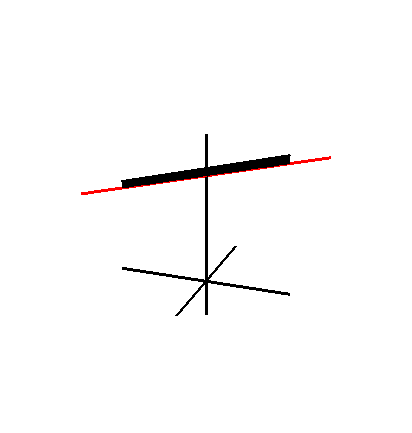Whitney umbrella

In mathematics, the Whitney umbrella (or Whitney's umbrella, named after American mathematician Hassler Whitney, and sometimes called a Cayley umbrella) is a specific self-intersecting surface placed in three dimensions. It is the union of all straight lines that pass through points of a fixed parabola and are perpendicular to a fixed straight line, parallel to the axis of the parabola and lying on its perpendicular bisecting plane.
Formulas[]
Whitney's umbrella can be given by the parametric equations in Cartesian coordinates
where the parameters u and v range over the real numbers. It is also given by the implicit equation
This formula also includes the negative z axis (which is called the handle of the umbrella).
Properties[]


Whitney's umbrella is a ruled surface and a right conoid. It is important in the field of singularity theory, as a simple local model of a pinch point singularity. The pinch point and the are the only of maps from R2 to R3.
It is named after the American mathematician Hassler Whitney.
In string theory, a is a D7-brane wrapping a variety whose singularities are locally modeled by the Whitney umbrella. Whitney branes appear naturally when taking Sen's weak coupling limit of F-theory.
See also[]
- Cross-cap
- Right conoid
- Ruled surface
References[]
- "Whitney's Umbrella". The Topological Zoo. The Geometry Center. Retrieved 2006-03-08. (Images and movies of the Whitney umbrella.)
- Differential topology
- Singularity theory
- Surfaces
- Algebraic geometry

